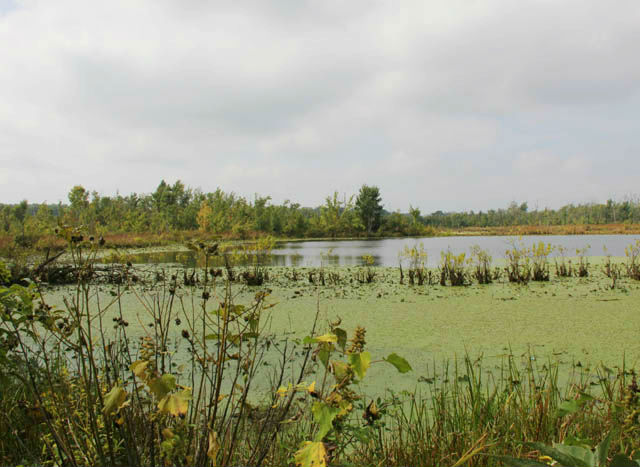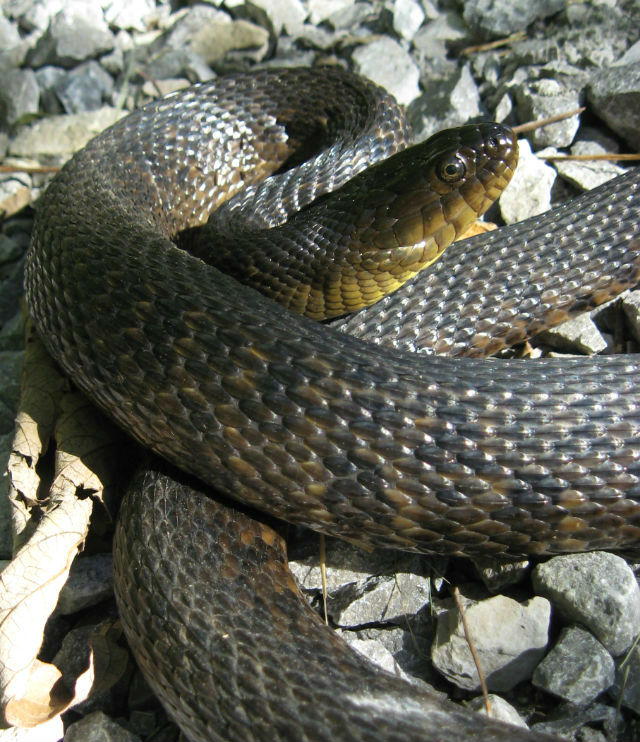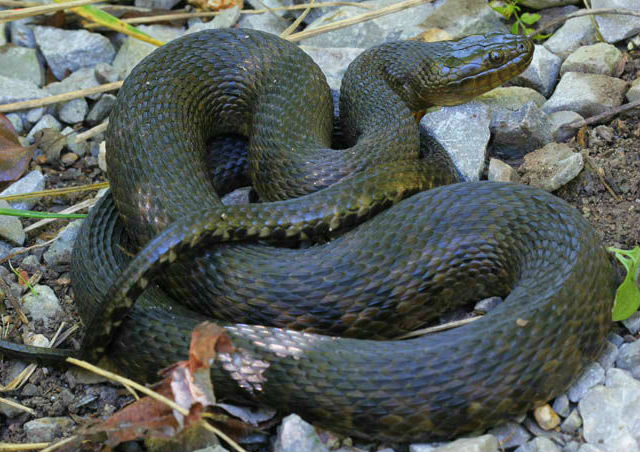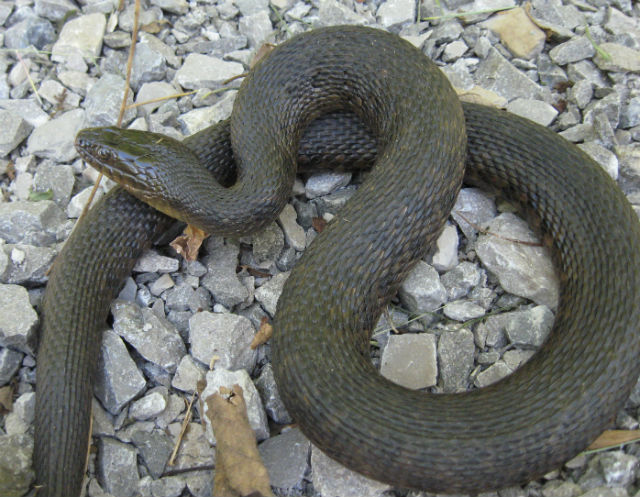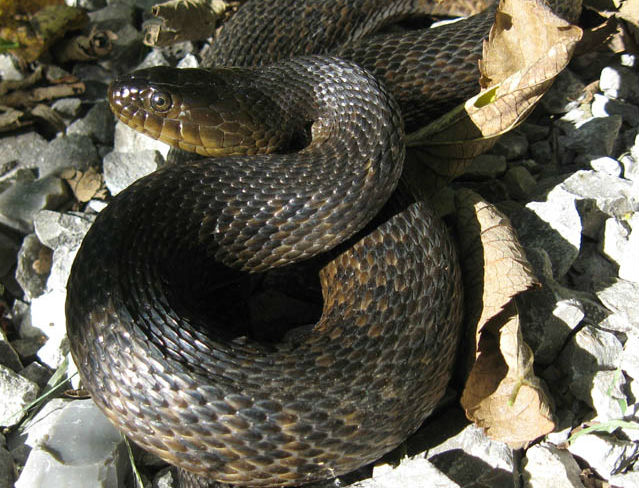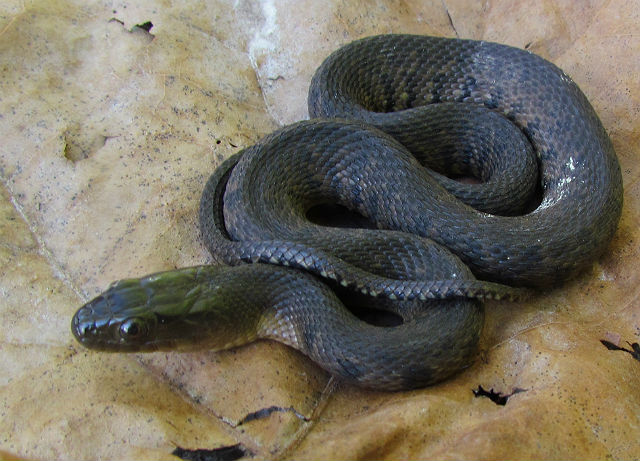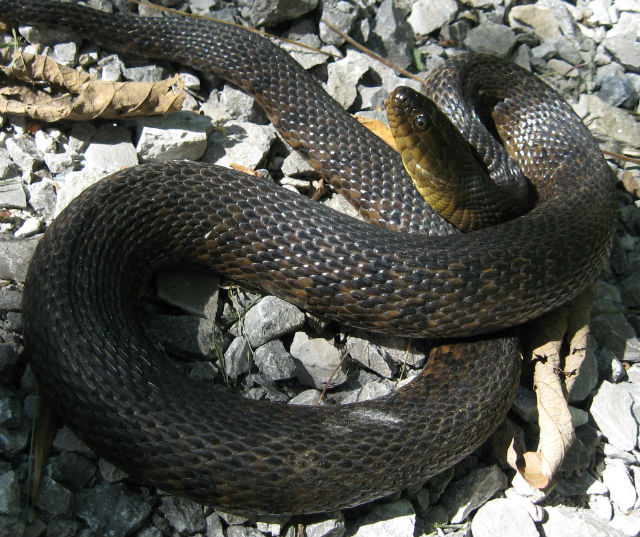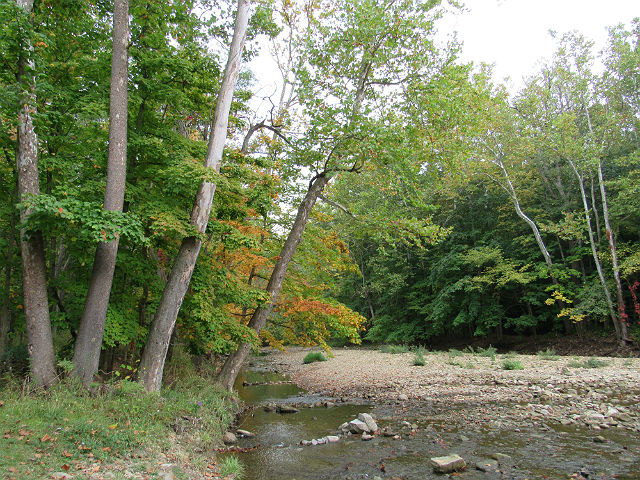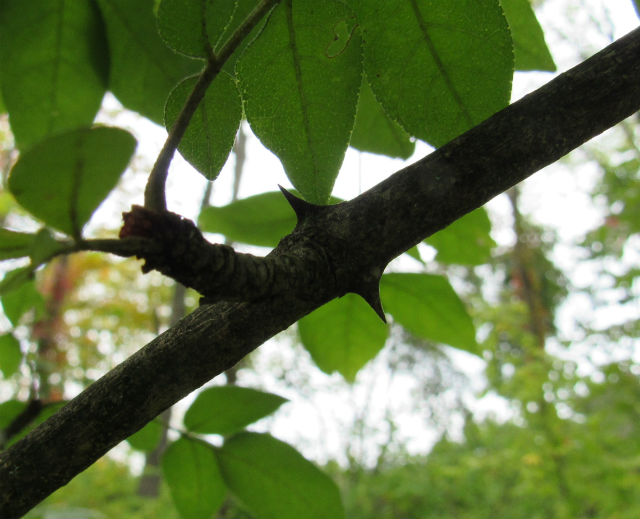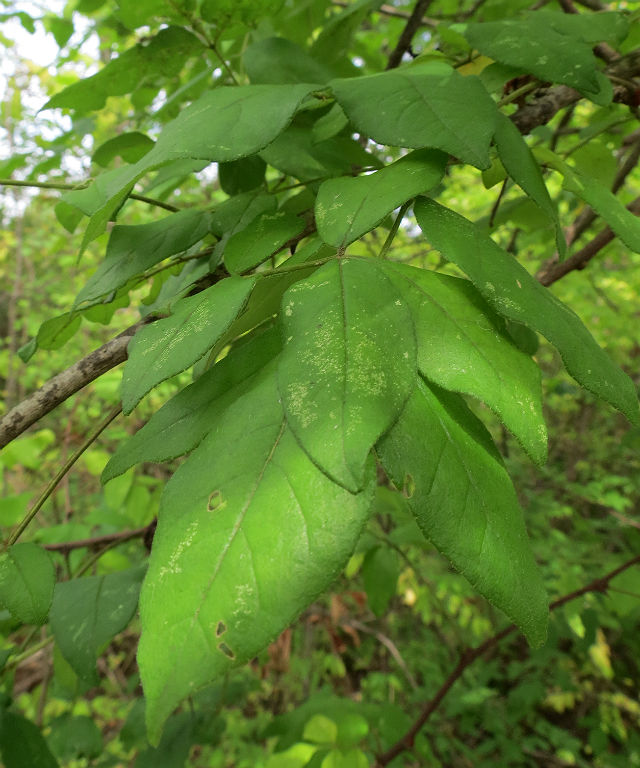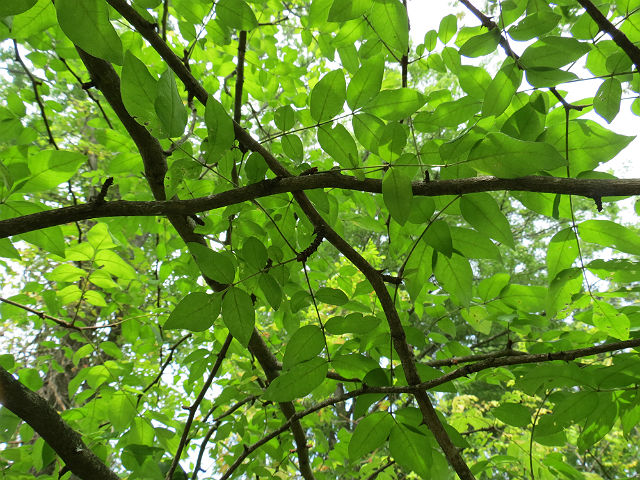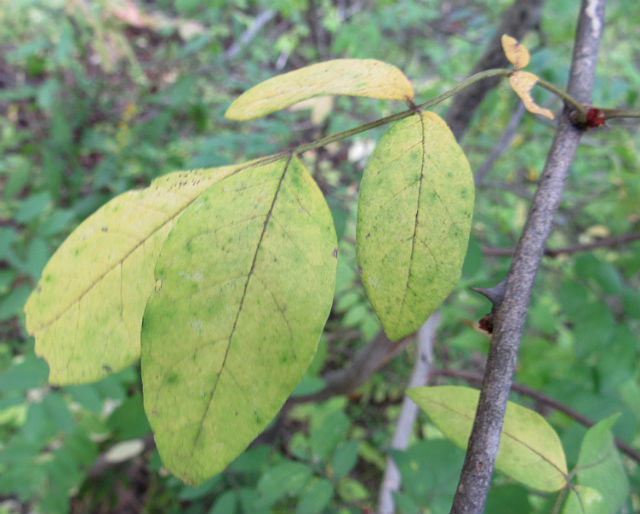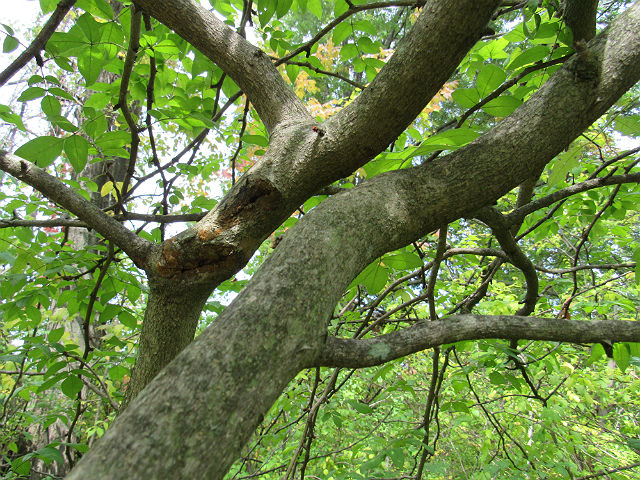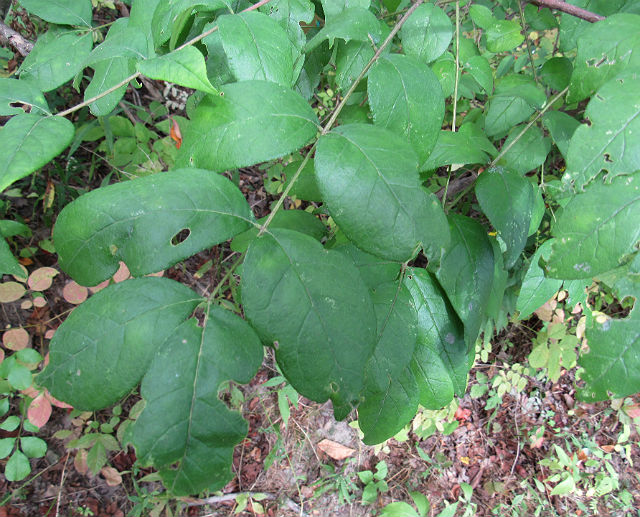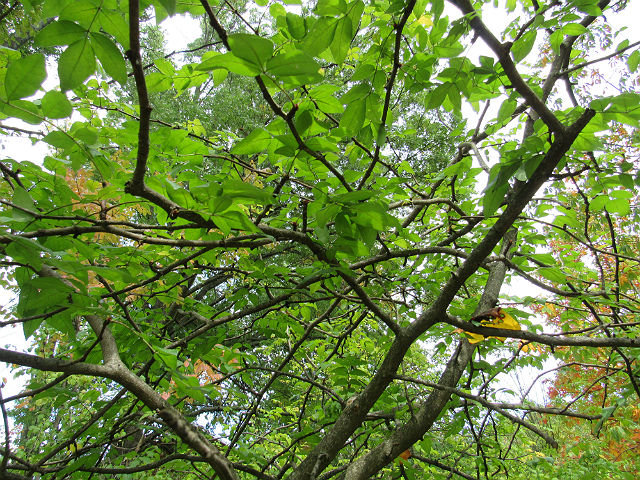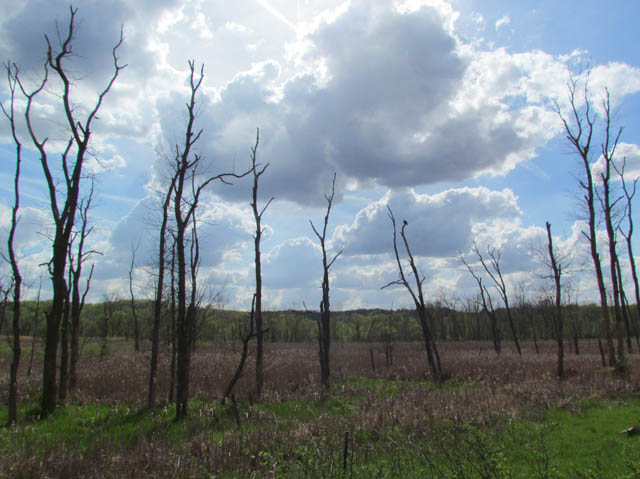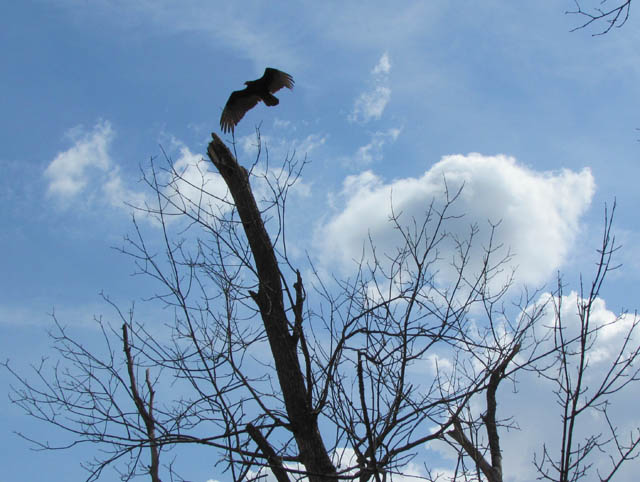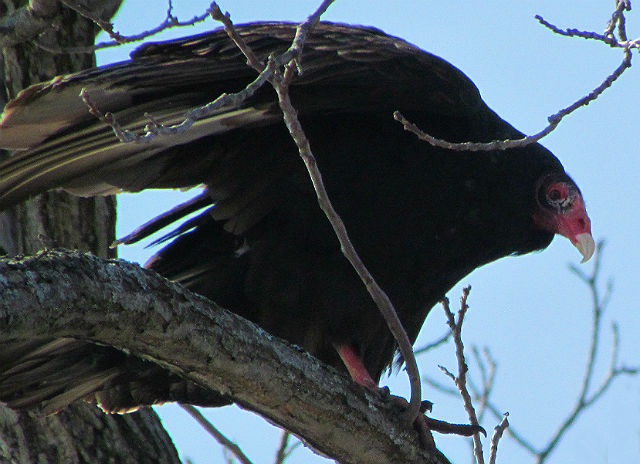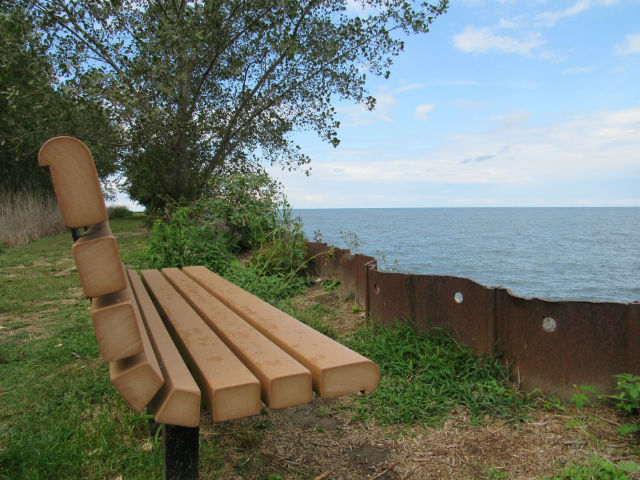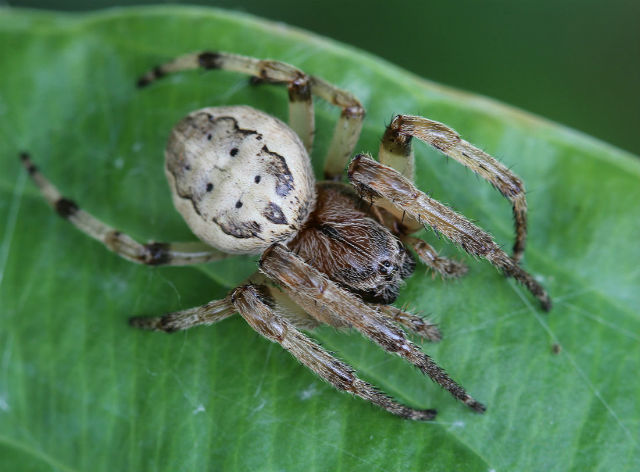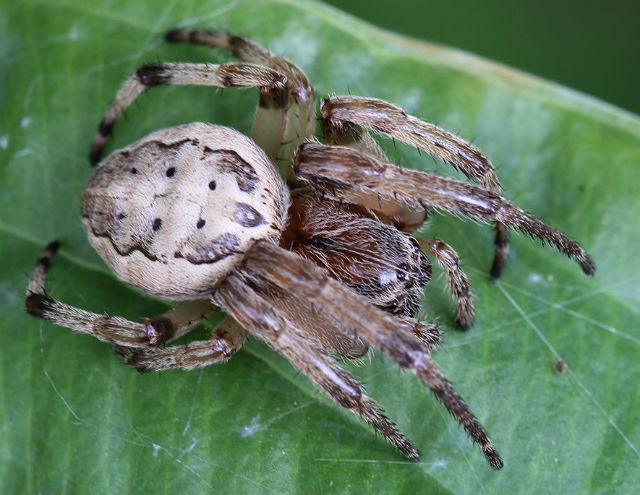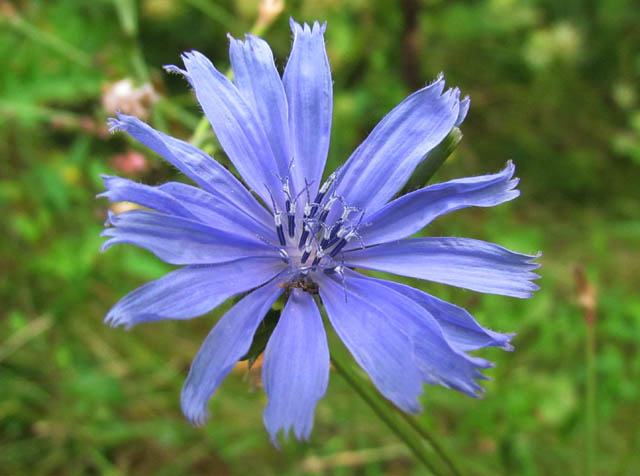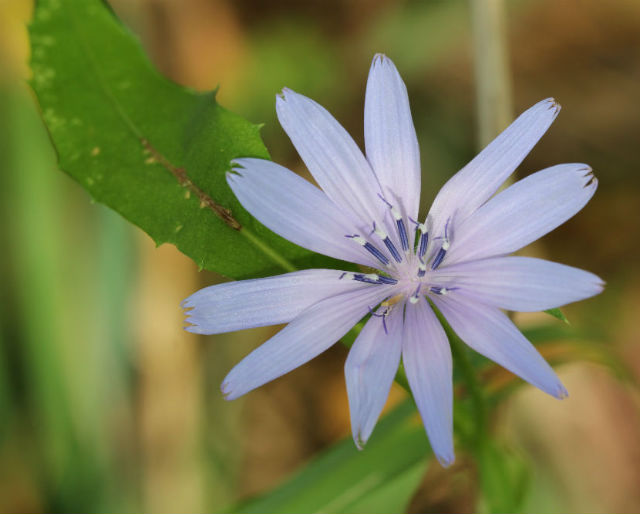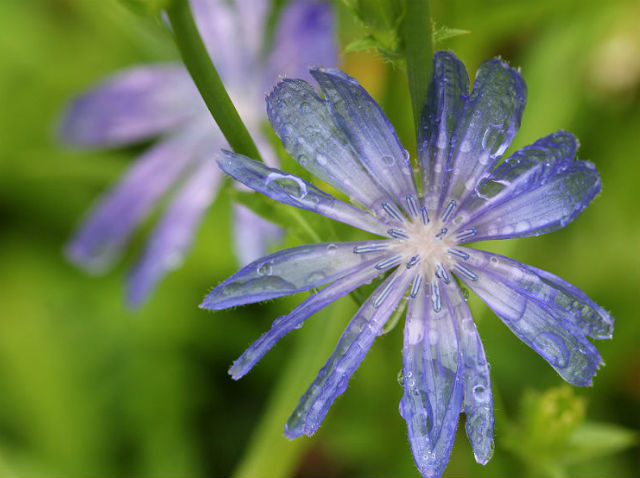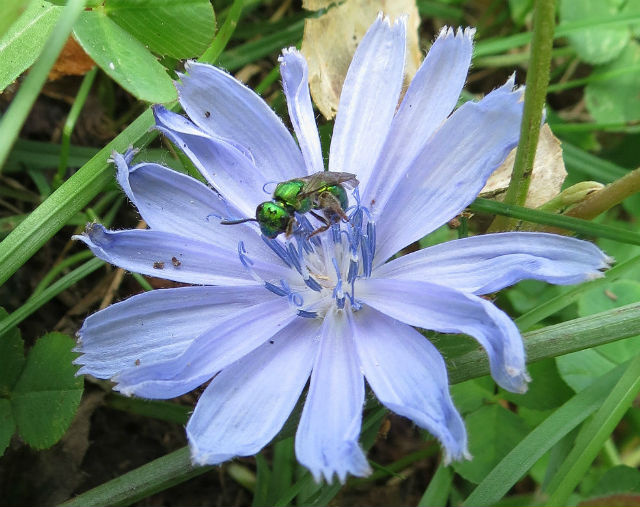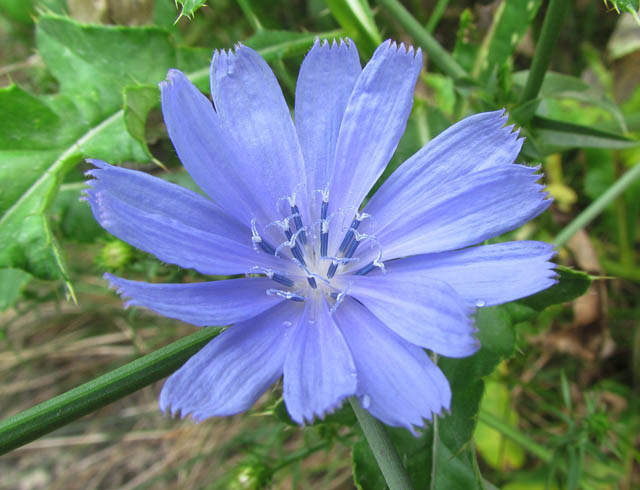Here at Snake Road in southern Illinois, I am enjoying searching for a reptile that I have found on several occasions previously; it is only found in Union County and is listed as State Threatened.
A medium-sized, dark-colored, heavy-bodied snake, the Mississippi Green Water Snake is greenish brown with numerous small, obscure olive-brown or dark brown markings. One might describe it as “drab”. The belly is dark gray with yellow half-moon-shaped markings.
Although not venomous, like other water snakes, it may bite viciously to defend itself as well as secrete a strong-smelling musk from glands at the base of the tail.
A unique characteristic that differentiates Mississippi Green Water Snakes from other types of water snakes in the United States is the presence of a row of scales between the eye and upper lip scales.
These snakes prefer large, permanent bodies of water, especially in open country and around open cypress lakes and marshes. Compared to other water snakes, they are more abundant where there’s heavy vegetation and water currents are slow.
It’s diet is a variety of fish, frogs, toads and salamanders. Mississippi Green Water Snakes are primarily nocturnal, searching for prey along banks of ponds or slow moving bodies of water at night.
Like other North American water snakes, they give birth to live yong, usually numbering from 8-34, though as many as as many as 101 offspring were recorded in a single litter.

